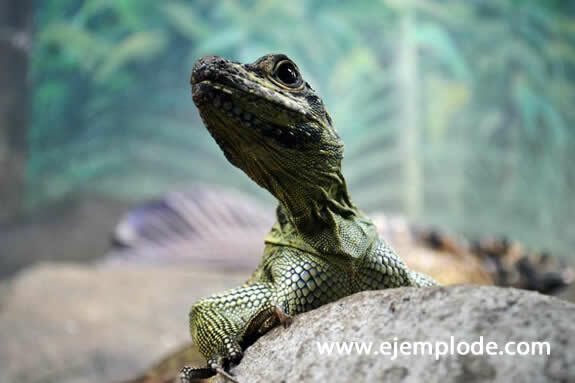Reptile Characteristics
Biology / / July 04, 2021
Reptiles are a species of animals that theoretically descend from amphibians, they are the direct descendants and dinosaur survivors, and even the crocodile is believed to have remained the same since ancient times Mezozoic.
They are cold-blooded, vertebrates and lung-breathing animals. Its reproduction is oviparous and some species are capable of living in the desert.
Reptiles have their own classification "REPTILIA", where vertebrate animals with scaly keratin skin are grouped.

Main characteristics of reptiles:
Reptiles, as already mentioned, are descendants of amphibians, and have among their qualities:
1.- Being oviparous.- Reptiles reproduce by means of eggs, which are fertilized by males in a copulation similar to that of viviparous ones; There are even some reptiles that hatch their eggs inside the female and come out in the form of childbirth in a way very similar to the viviparous ones.
2.- Temperature.- The temperature of reptiles is ectothermic, so they absorb the heat of the sun and to lower their temperature they stay in the shade or under water.
3.- His breathing.- Reptile respiration is not done on the skin as in amphibians, but its respiration is very similar to that of land animals such as horses and even similar to that of man.
4.- Food.- The diet of reptiles is essentially carnivorous, very few reptiles eat any type of grass and like the rest, terrestrial carnivores absorb vitamins by consuming the entire stomachs of their prey.
Reptiles have a slow digestion, and can consume large amounts of food, while digesting it slowly; There are also reptiles that consume small amounts of food and to help their digestion consume small pebbles or stones, which help them digest their food.
Among the non-carnivorous reptiles we can mention the terrestrial or desert tortoises, which are They feed on plants, but at the same time they are capable of eating small insects or other reptiles such as Lizards.
5.- The circulation.- Circulation is two-way, the first way works with the blood in the lungs and the second collects and handles the rest of the blood in the body.
The circulatory system of large reptiles is more developed than that of small ones, which is evidenced by the conformation of their hearts.
Types of reptiles:
- Chelonians.- They are reptiles like turtles; they have a short and plump body, which is protected by a shell formed by bony bridges and ligaments, their mouth is similar to that of bird beaks and they do not have teeth.
- Rhincocephalos.- They are practically fossils and are only found in New Zealand.
- Scaly.- Scaly, the scaly are the reptiles that keep their body covered by keratin scales, the variety is very wide and includes all snakes and some lizards.
- Crocodiles.- This branch is made up exclusively of animals that have aquatic life and includes crocodiles, alligators and some lizards.
